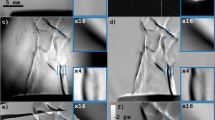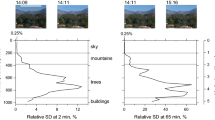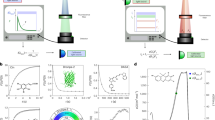Abstract
IT is well known that the sensitivity of an ordinary photographic emulsion begins to fall rapidly just below 2500 A., and is very low at 2100 A. This fall is due to the absorption of short-wave radiation by the gelatin of the emulsion. It is commonly stated1 that higher sensitivity in this region may be obtained by greatly reducing the gelatin content of the emulsion, as in the Schumann plate, or by bathing an ordinary plate in a fluorescent substance which can convert the short waves into radiation able to penetrate the gelatin.
This is a preview of subscription content, access via your institution
Access options
Subscribe to this journal
Receive 51 print issues and online access
$199.00 per year
only $3.90 per issue
Buy this article
- Purchase on Springer Link
- Instant access to full article PDF
Prices may be subject to local taxes which are calculated during checkout
Similar content being viewed by others
References
For example Hopfield and Appleyard, J. Opt. Soc. America, 22, 488 (1932). Weichmann, Z. wiss. Phot., 34, 140 (1935).
Author information
Authors and Affiliations
Rights and permissions
About this article
Cite this article
HUNTER, A., PEARSE, R. Sensitivity of Photographic Plates in the Region 2500–2100 A. Nature 138, 37–38 (1936). https://doi.org/10.1038/138037b0
Issue Date:
DOI: https://doi.org/10.1038/138037b0
Comments
By submitting a comment you agree to abide by our Terms and Community Guidelines. If you find something abusive or that does not comply with our terms or guidelines please flag it as inappropriate.



